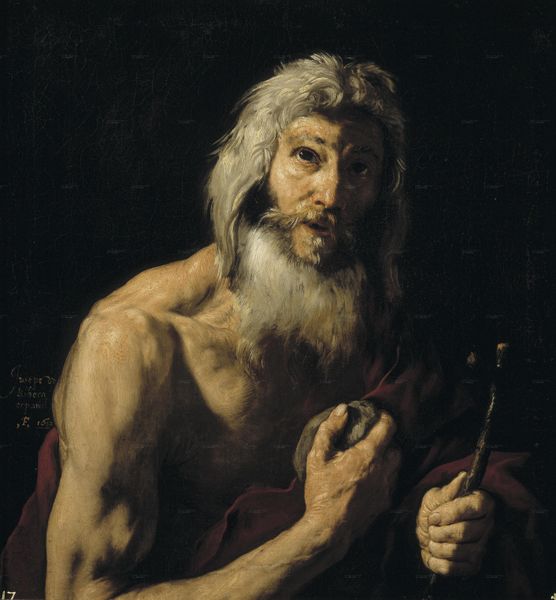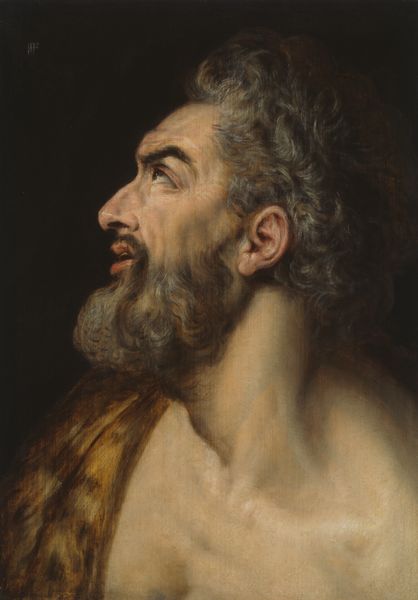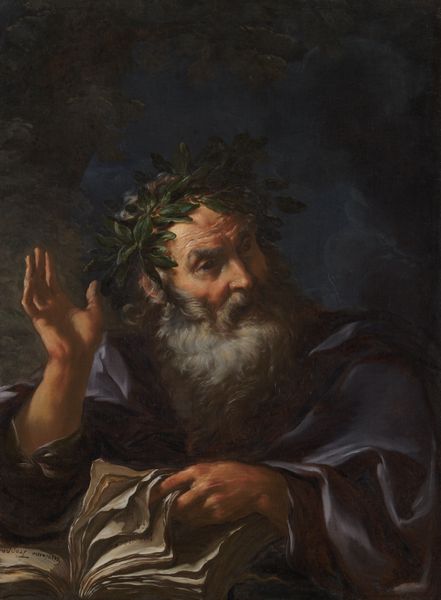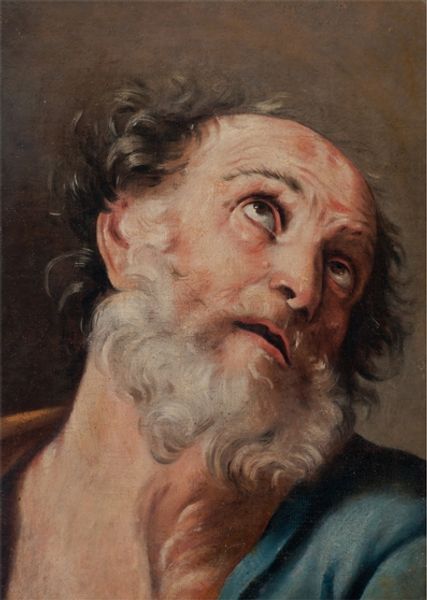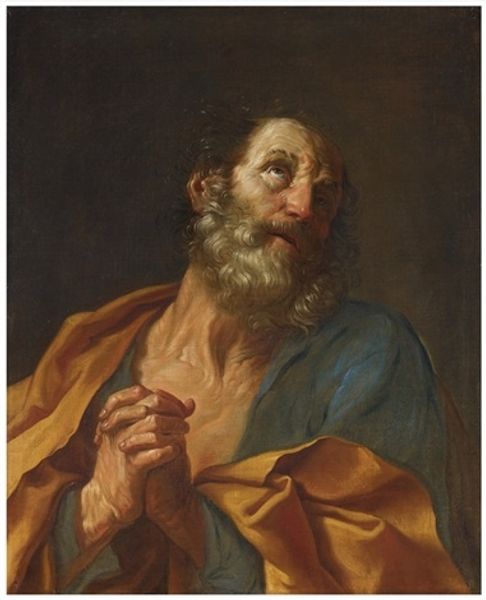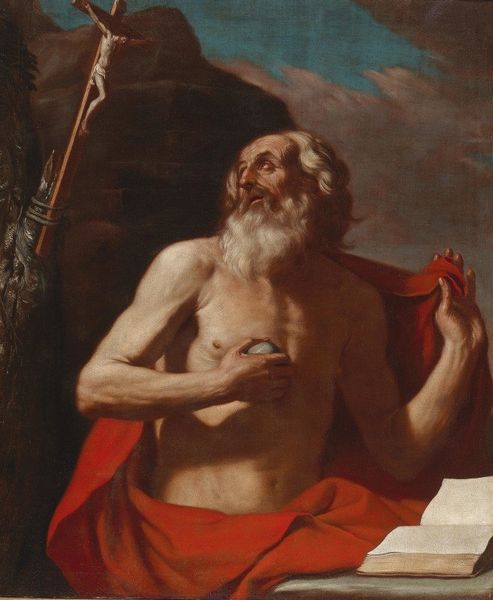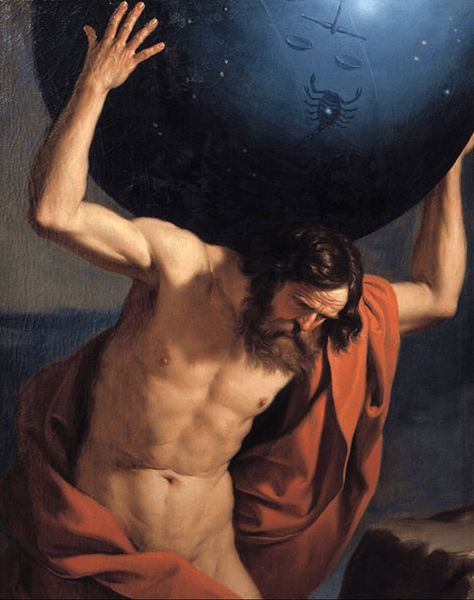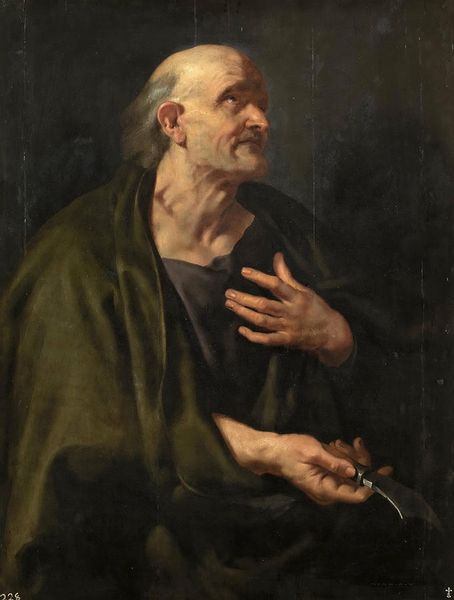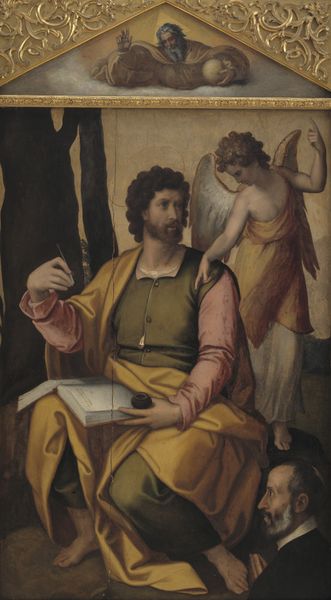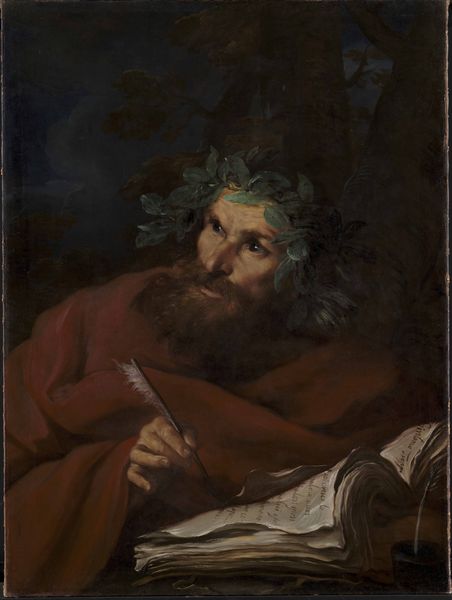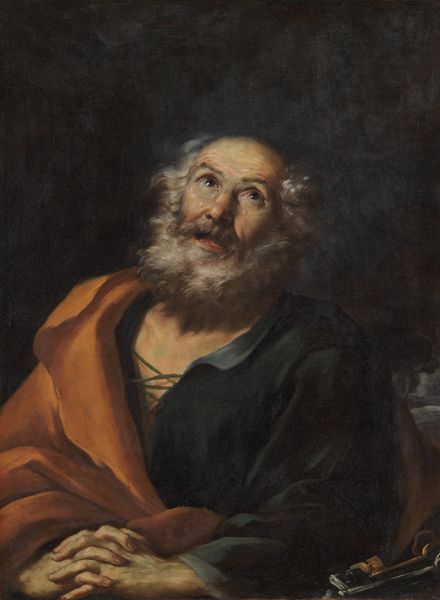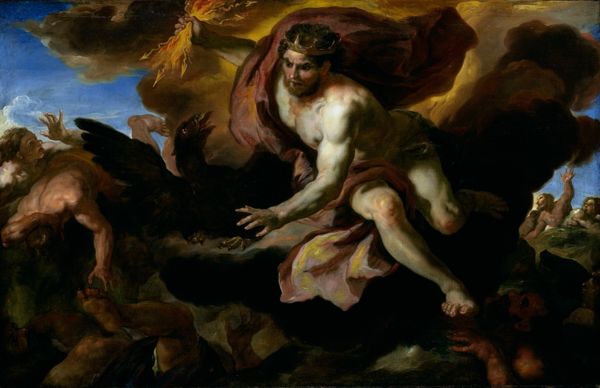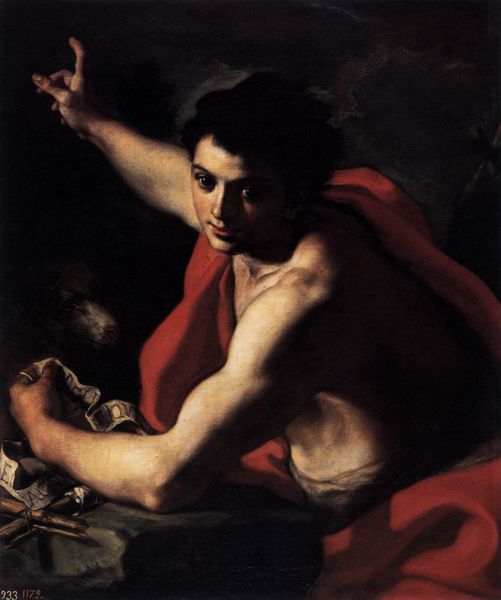
painting, oil-paint
#
portrait
#
baroque
#
painting
#
oil-paint
#
figuration
#
history-painting
Dimensions: 98 cm (height) x 73 cm (width) (Netto)
Editor: This is Girolamo Troppa’s “Saint John the Baptist,” created around 1665 to 1668. It’s an oil painting and it really strikes me with its intensity. The upward gaze, the pointing finger... It feels like a moment of revelation. What's your take? Curator: Ah, revelation! A great word for it. For me, it whispers of Baroque drama. Notice how Troppa captures a potent moment through that gesture, that divine light breaking through the storm. There's such rawness. What do you think the contrast of light and dark achieves? Editor: I guess it adds to the drama, right? Almost like he's caught between worlds or ideas, which really pulls me in. Curator: Precisely! Baroque artists often used this technique, called chiaroscuro, to heighten emotion and spiritual awakening. I like to imagine Troppa capturing the very instant John receives his calling. It’s like a cinematic frame of a grander story. Does it remind you of anything else? Editor: Actually, now that you mention the story, it feels very staged and artificial, more like a theatrical presentation. I guess the contrast feels heavy handed, it flattens the emotions it’s trying to portray, don’t you think? Curator: It’s interesting you say that. I can also perceive the “staging”, like the figure almost floating, yet it’s undeniably a moving expression of faith, rendered with exceptional humanity, from the somewhat windswept hair to the intensity in his gaze. Troppa makes this biblical narrative relevant to all our struggles. What is your key takeaway here? Editor: Hmmm… seeing it as a captured, frozen moment definitely gave me something to think about! I wouldn't have considered that reading on my own. Curator: And for me, hearing your “staged” remark encouraged me to consider this painting in new ways. We're both one step closer to really "seeing" it.
Comments
statensmuseumforkunst almost 2 years ago
⋮
The left hand of the figure points in the direction in which he is moving, while his eyes and face is directed backwards, towards rays of sacred light in the sky. The iconography of this figure is less firmly determined, as red robes of this kind could be worn by several different Biblical characters in the paintings executed around this time. The same holds true of the cross carried in the figure’s right hand. Even so, it seems unlikely that the figure is a depiction of Saint Philip: the cross seems to be a reed cross, which points towards the iconography traditionally associated with John the Baptist. The Spanish painter-writer Francisco Pacheco (1564–1644), who was father-in-law to Diego Rodríguez de Silva y Velázquez (1599–1660), provides very accurate iconographic instructions in his art treatise El Arte de la Pintura (1649). Pacheco draws on Italian, Spanish and Latin sources for his detailed instructions on how artists should portray a given holy figure. His directions on how to correctly depict John the Baptist matches Troppa’s portrayal well. Pacheco writes in great detail about the iconography of John the Baptist. He should be portrayed as a man between 29 and 30 years of age, for that was when he found his calling and began to preach, i.e. the time when he left his parents behind in order to set out into the wilderness to live as an hermit. Alternatively he should be portrayed as a mature man, ‘when the heavens noted him with remarkable splendour and he began to preach about the regime of the heavenly kingdom and the coming of our Saviour on the banks of the river Jordan’. According to Pacheco there is nothing wrong with artists adorning their paintings of John the Baptist in the traditional manner by attiring him in a purplish cloak as a symbol of his glorious martyrdom. Pacheco recommends that John the Baptist should be depicted with the cross-staff as his attribute, for just as Jesus was always aware of his impending martyrdom on the cross ever since childhood, so too was John the Baptist. Hence he always carried the cross with him, using it as an object of contemplation and meditation, Pacheco states.
Join the conversation
Join millions of artists and users on Artera today and experience the ultimate creative platform.
